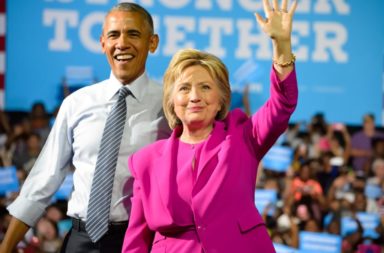The problem with Hillary Clinton’s campaign is that her election seems almost inevitable.
With the Republican primaries still riddled by infighting, a series of characters who seem intent on tearing each other apart, and a set of policy positions as diverse than the country itself, it just doesn’t seem possible that a Republican candidate can emerge from this series of fights unscathed.
On the Democratic side, there seems to be only two serious candidates. And one of them, a self professed socialist, simply cannot hope to represent the American people.
So then why is all this a problem for Hillary? An almost presumed nomination and a series of rival candidates destroying each other seems to be an unparalleled gift to the likely future Democratic nominee.
Well it might appear so, but the problem with this is that the process of Presidential primaries is that they are meant to test future candidates. They’re meant to pit elite candidate against elite candidate, until the one most likely to beat the nominee from the other side emerges.
The problem with the primaries on the Democratic side is that with just two candidates polling at a noteworthy level, this shallow race seems to suggest that the Democratic Primaries are not putting Hillary to the test as much as they should be.
Instead, as Republicans fight it out among a diverse sea of candidates, future Presidential hopefuls strengthen themselves. Meanwhile, voters continue to question whether they should gift the “presumed nominee”, Hillary, the presidency.
They worry that her Presidency is all but guaranteed, and that after spending eight years by her husband’s side in the White House, and then another term as Secretary of State, she’s certain to spend another four years in the White House come 2016.
Certainly, she has significant credentials. She’s worked in public life at least as long as any of the other Presidential hopefuls. But what voters want to see in a candidate goes beyond this.
That’s why Clinton is reaching out to the young vote. She’s reaching out to younger females in particular, who overwhelmingly tend to vote for Democrats, but can also often be disengaged.
It’s for this reason that Clinton has been tweeting, using ‘Bitmoji emoticons’, filming videos on social media channel Snapchat, and even making a guest appearance in popular television show, Broad City.
It’s also the reason that Clinton is now reaching out to the youth vote in a more meaningful way. She’s no longer relying on her mere existence as a female candidate to spark hope for feminists everywhere. She’s now actively making the case that the first female President of the United States is an historical phenomenon. She’s making the case that opportunities like this don’t just occur, they’re won.
It’s why she’s hoping that in Iowa this time around, she can capture the majority of the female youth vote, instead of the disappointing 11% won in 2008 behind Obama’s 51% and Edwards’ 19%.
Indeed, her numbers among young females this time around seems to reflect this more concerted effort. Admittedly, she continues to poll behind frontrunner Sanders, but at a difference of only 38% to 40%, she’s no longer showing the same 40 point trail behind the frontrunner that she showed in 2008.
Clinton’s poll numbers are still not enviable for a candidate with this level of experience and with this little competition in the cycle of primaries. For someone of her experience, her stature, she’d be disappointed not to be storming ahead on a wave of momentum.
The truth is, people are excited about Clinton. But not in the same way that people were excited about Obama. One year out from elections, momentum is building, but it’s also building for others.
If Clinton wants to see herself gain the same momentum as her former rival, she’s going to have to employ the same level of creativity. Obama’s campaign was praised globally for its innovative use of digital and social media to mobilise the youth vote. Clinton certainly can’t be faulted on that front.
But what Obama did that Clinton’s yet to do, is he painted a vision for America. He talked about his personal story, and how it was a story that all Americans can share. If Clinton wants to enjoy the same success as her once rival, she’s going to have to share that same story. And Americans are going to have to buy it too.




